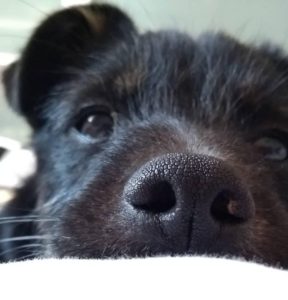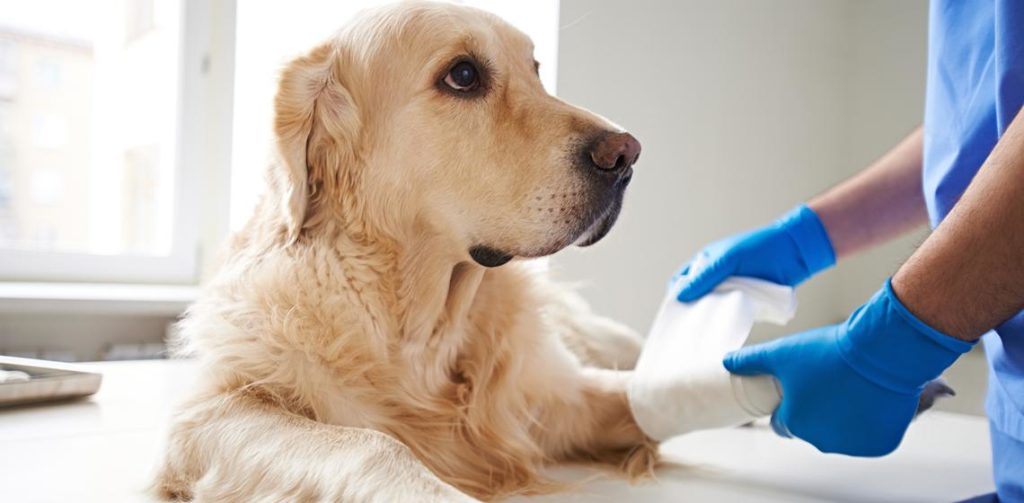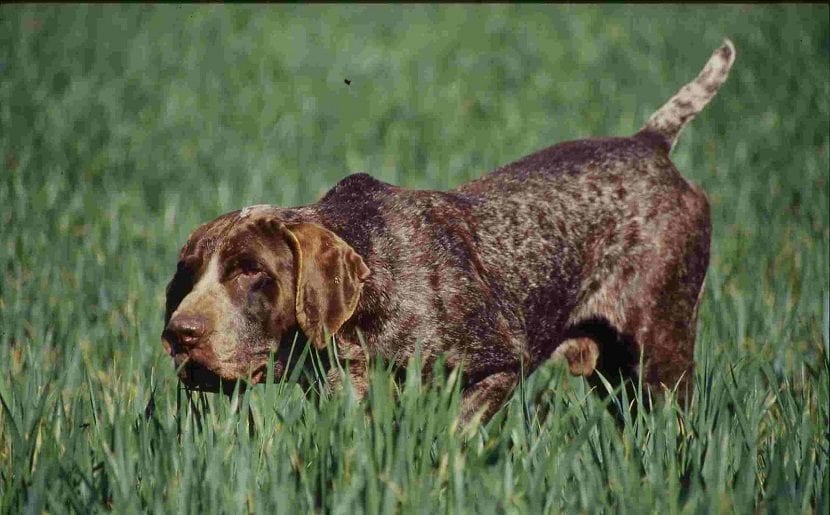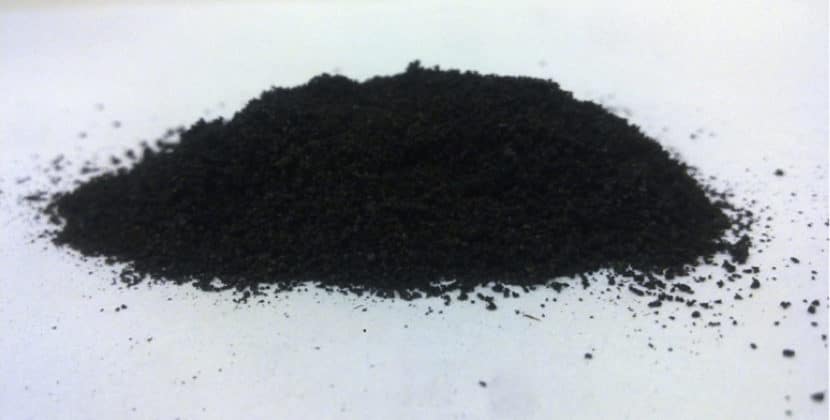
Have you ever wondered how to act and assess the condition of an injured dog? Dogs, like children, tend to suffer accidents since in many cases they are not aware of the danger that surrounds them. Between the most frequent veterinary emergencies They tend to be domestic accidents, run over and fights between dogs. That is why it is important to know how to act in these circumstances.
Next, we are going to mention several cases in which you must identify if your dog is injured. We will give you some points to follow that can be of great help to reduce the damage that the animal has. At the same time they can be useful to streamline the work of the veterinary team.
What has happened to the dog? Is the dog hurt?

It is important recognize what has happened to act one way or another. It is appropriate to provide this information to the veterinary team by phone for advice. We can also give this information when we get to the clinic in question.
Immobilize the dog if it is injured
No matter how good our dog is in a moment of daze and pain, it can bite us in self-defense. So it is convenient to use a muzzle. If we do not have a muzzle on hand, you can improvise one with a bandage or a cloth handkerchief. To do this, you will pass the bandage under the animal's muzzle and make a loop over it. The rest of the bandage or scarf is tied behind the ears. In the case of short-nosed dogs can wear a towel around the neckIf he is panting, do not cover his muzzle.
Check if the animal is conscious and oriented
You can try call out and gently move your hand or other object back and forth to see if he reacts.
Check vital signs
If necessary, after immobilization, check that he is breathing and that his heart is beating.
Traffic accidents, how to act if the dog is injured.
At first glance, it may appear that a dog that has been struck by a vehicle is not injured. However you probably have an internal injury, for example a ruptured spleen or diaphragm. It is important to be cautious in these cases because the animal is scared and in pain.
If it is standing up, being stunned it may put itself in a defensive position and try to bite us. That's why it's important use a strap on the wrong side to form a loop and with this be able to gently tie the animal by the neck. If the animal is nervous and does not allow you to grab it at the moment, you have to be patient. Speak to him in a slow voice to gain the animal's trust.
In the event that the animal cannot walk, we must transport it with the greatest possible care. For this, a blanket is enough for us, on which we will place the dog, keeping the body of the animal straight. Keep the dog's head down without forcing it as it may have cervical damage. The hindquarters should never be elevated above the rest of the body. It may be that the diaphragm is ruptured and this action would cause the organs of the thoracic cavity to penetrate the abdomen.
If possible, the handling of the dog is done between two people. In addition to avoiding touching the abdomen and chest. To catch it we will do it by passing the forearm through the back of the thighs and across the chest, while we stick it to our body.
If you were bleeding you can putting pressure on the wound to stop blood flow. Never plug the bleeding if it bleeds from the ears or nose. If you bleed from your mouth, it could be a sign that you have a local internal trauma. As if it has a visible fracture, do not try to reposition the bone.
A very common thing is that the pads are cut. When this happens they bleed conspicuously, so it is advisable to bandage the leg firmly before taking it to the vet.
Freezing
Local frostbite occurs when there is a intense exposure to cold. It usually occurs in the areas most devoid of hair and with little vascularization, such as the ears, the tail, the testicles and the extremities of the legs. When this happens the skin is cold, pale and numb. As an urgent measure, you can apply hot cloths, without exerting pressure and without rubbing the affected area, and go as soon as possible to the nearest veterinarian.
Burns (from heat, from electrocution, from chemicals)
Heat burns
By the curious nature they have the puppies they are the ones most at risk of being burned. The vast majority of burns happen by direct contact with hot liquids (water, oil ...), hot materials or on contact with fire.
Usually first aid for pain relief apply warm water to the affected area, never cold or ice, and avoid rubbing. The extent of the injury from a burn can only be seen after a few days. For this reason, it is important to go to your veterinary center as soon as possible.
Electrocution burns
The youngest dogs, are the ones who, due to their restlessness and because their teeth are changing, can get electrocuted when chewing on a cord of any appliance that is connected to the mains. This type of burn has two effects, on the one hand the contact burn that will be the one that we see with the naked eye, and on the other the effect of the electrical discharge on the body.
If this happens, before helping the dog they should disconnect the appliance from the electrical current. In the event that he is not breathing, he must be given artificial respiration. This technique is performed with the dog lying on its right side. And gentle, even pressure is exerted on the rib cage at five-second intervals. Pull your tongue forward if necessary to prevent airway obstruction. The dog must come to itself if the heart continues to beat. To find out if your heart is beating, you can check on the left side between your ribs. It is roughly at the point where it reaches the dog's elbow when flexed.
Suitable often go as urgently as possible to the nearest veterinary center, since the greatest damage is that produced internally by the discharge.
Chemical burns
All the chemical burns They are produced by direct skin contact with the chemical. In these cases it is important to wash the skin with large amounts of water to remove the corrosive substance.
Foreign bodies, the most common thing that your dog can be injured with

With this term I mean any object that is not typical of the animal, and that can penetrate the skin or ingest it.
In the garden or field areas it is quite frequent in the spring time that some spike or straw it sticks in the skin of our friend, or, it is inserted in the ear.
How can you tell?
In case you have a foreign body in the ear canal your dog will constantly shake his head. He will frequently scratch his ear where he has it and preferably turn his head to the side. You may complain and, even if it takes a long time, purulent fluid discharge may occur. If he begins to have any of these symptoms, it is important not to delay in taking him to the vet. A perforation of the eardrum can occur and as a consequence infection and hearing loss.
If a dowel, splinter, or other sharp object gets stuck in you between the pads, it will penetrate as you walk. Your dog at the end of the walk will begin to idly lick the affected area and will not want to support the injured leg. Even if he is in a lot of pain, he may try to bite us or make an ugly gesture at you. Therefore, if possible, when they explore your dog they should do so with a muzzle. If you do not see clearly what has been nailed, go to a veterinary center where they will examine it in greater detail.
Another situation may be that the dog swallows some inedible object and that produces a intestinal obstruction partial or complete. The symptoms are continued vomiting and diarrhea. Even bowel movements and vomiting can be accompanied by blood. In addition, they adopt a posture where they hunch their back and retract their belly. This is a sign that your dog has abdominal pain.
Poisoning
Many times dogs with their innate curiosity or carelessly ingest substances that are not appropriate for them, such as cleaning products, solvents, rodenticides, drugs, or psychotropic substances.
How to identify it?
The dog may have a lack of appetite, vomiting that is sometimes accompanied by blood, present a downcast, listless state, the mucous membranes turn whitish or yellowish, they may present fever, tremors and even seizures.
In these cases it is important not to cause the dog to vomit if the substance is corrosive as we cause more damage. If we have at home with activated carbon (they can buy it here) we can administer it mixed with water using a syringe. Activated charcoal serves to delay the absorption of the poison, which saves us time to go quickly to the vet. If you have information about the product that your dog has ingested, it is recommended that you give it to the veterinarian.

Fights between dogs
Dogs sometimes don't get along with each other and fights happen. If you find yourself in the situation that they have bitten your dog, The first thing is that you take special care, because your dog, even if he is the best in the world, looks totally helpless and in pain and is very likely to bite you. After taking the necessary measures, you should evaluate if your dog has a bite wound, and if it appears to be deep or superficial. Although it does not present injuries, it may be sore, especially if a dog has bitten it with greater force than it, because it may have caused a contusion or fracture. As an advice, if your dog complains, has problems walking or making any movement, even if he does not present bites, take him to the vet where he will examine him and probably do an X-ray to highlight fractures or internal damage.
I hope that the advice in this post has been useful and can guide you if you find yourself in any of these situations. And if you have any questions, our recommendation is that you go to the vet. Your trusted veterinary team are the ones who know your pet better than anyone, and are therefore the ones who are truly qualified to help them.